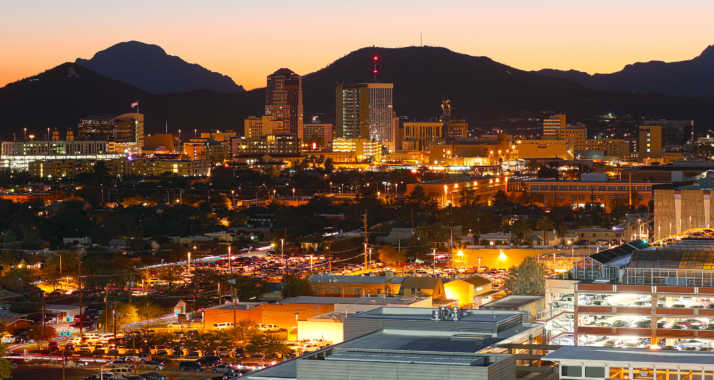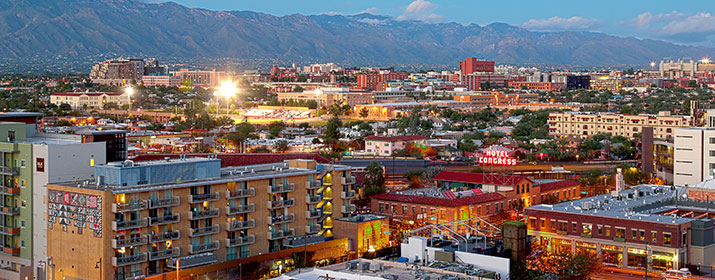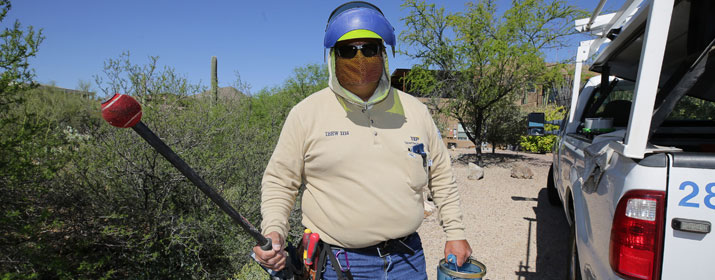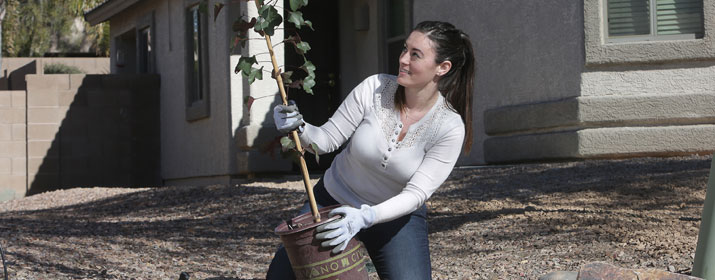
Desert dwellers like owls, javelinas, coyotes and jackrabbits know it’s best to lay low and conserve energy during the hottest period of the day.
TEP customers would do well to follow their lead. By avoiding energy use between 3-7 p.m. during the summer, you can help keep our service reliable and affordable while making the most of our renewable energy resources.
If you’re using a Time of Use pricing plan, you also can save money by helping TEP beat the peak.
Stabilizing the Grid
Because our energy grid operates in real-time, we must generate all the power our customers need at the exact moment they use it. This would be easier if everyone used about the same amount of power all day. But energy use fluctuates throughout the day, peaking in the late afternoon during the summer as people come home from work, cool their homes, cook meals and enjoy other activities.
Higher peak energy use increases the cost of providing power, since TEP pays a premium on the resources to meet these summer peak demands. Think of it like a doorway. If everyone in town needs to jam through the door at the same time, we’d need to build a really big door! But if some customers take turns – shifting energy use earlier or later in the day – we can serve everyone more affordably.
In recent years, extreme heat in the western United States has threatened to drive peak electric use beyond the level our regional grid can serve. Our region enjoys abundant solar energy during the middle of the day, but that production fades during the late afternoon as the sun starts to set. Battery systems can save this energy for use on-peak, but there aren’t very many of them online yet. So utilities must ramp up natural gas generation to serve the surge in usage between 3-7 p.m.
If energy supplies can’t keep up with demand, grid operators must find ways to reduce usage to balance the loads and resources. We start by asking large industrial users to suspend operations and by shutting off service to customers that have agreed to occasional interruptions through “demand response” programs or interruptible rates. Next come appeals to the public for conservation, and finally as a last resort “rolling blackouts” – short outages that are rotated from one area of town to another to limit the impact for any one group of customers.
“Fortunately, our customers have rarely experienced these kinds of interruptions. But energy supplies are tighter than ever, particularly in California, driving up the price of power on the wholesale energy market,” said Sam Rugel, Director of System Control & Reliability
So serving customers on-peak is likely to be more expensive, and we might have a harder time finding replacement power if our own generating resources suffer an outage or wildfires force transmission line shutdowns.”
Using less energy between 3-7 p.m. helps ease the pressure on our system, reducing our need for expensive on-peak power and reducing the threat of energy shortages, particularly during an extended Western heat wave.
Using Cleaner Energy
“If you keep an eye on our Clean Energy Tracker, you’ll see that our solar energy systems produce the most power around noon, when the sun is directly overhead. You also may see that our wind farms are most productive during the early morning and later in the evening, after the sun sets,” explained Ted Burhans, Director of Emerging Technology and Innovation.
So when you shift the majority of your energy usage to mornings and early afternoons, a larger share of the energy you’re using for your dishwasher, washing machine and other appliances and electronics is coming from the sun.
Similarly, your evening energy use taps into our wind energy resources. Sunset is when winds start to kick up in southeastern New Mexico, allowing us to generate clean wind power at our new Oso Grande Wind farm. This 250-megawatt site will generate enough power each year to serve the annual electric needs of nearly 100,000 homes.
Saving Money
If you’re on one of our three Time-of-Use pricing plans, avoiding energy use between 3-7 p.m., you can also save money. These plans reward customers with lower rates when they use less energy during our summer and winter “on-peak” hours. Summer on-peak hours are 3-7 p.m. weekdays May through September and the winter on-peak hours are 6-9 a.m. and 6-9 p.m. October through April. All weekends and major holidays are always off-peak.
Once you form some new habits, it’s easy to save money and energy on these plans. Some effective strategies include:
- Running your dishwasher or washing machine before you turn in for the night.
- Using ceiling fans to make the air feel cooler in the late afternoons rather than running the air conditioner.
- Programming your pool pump to operate at midday instead of in the late afternoon.
- Pre-cooling your home before 3 p.m. by setting the thermostat three degrees lowerthan your preferred setting at noon before peak begins and then adjusting your thermostat higher during peak hours.
- Cooking meals in your oven or on your stove before 3 p.m. and then heating them up in the microwave at dinnertime.
“With all of us doing our part to conserve energy during late afternoons this summer, we can ease the stress on our regional grid, make good use of our renewable energy and enjoy lower energy costs,” Rugel said.






